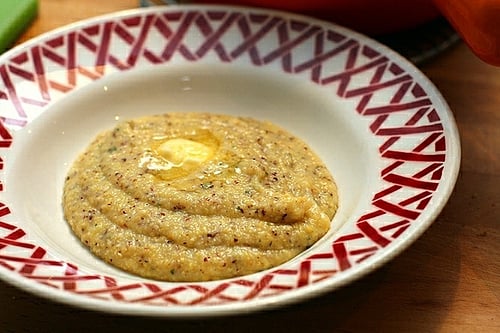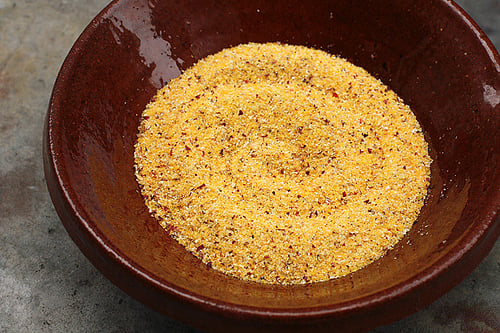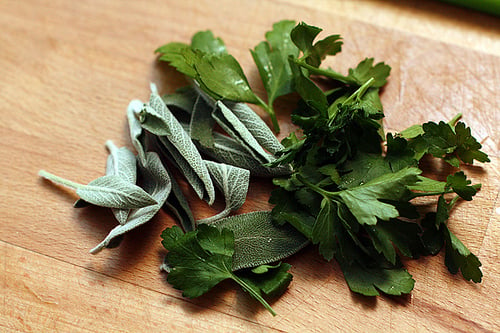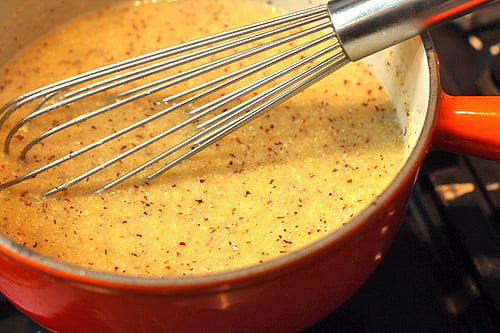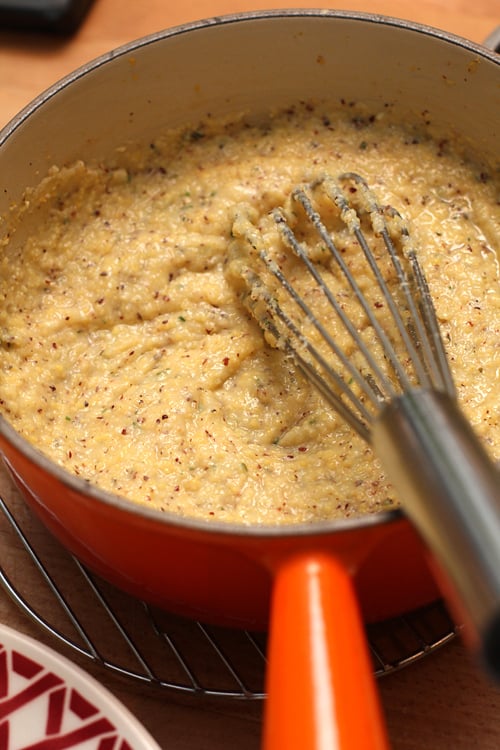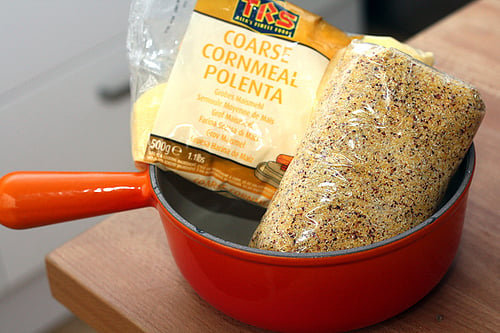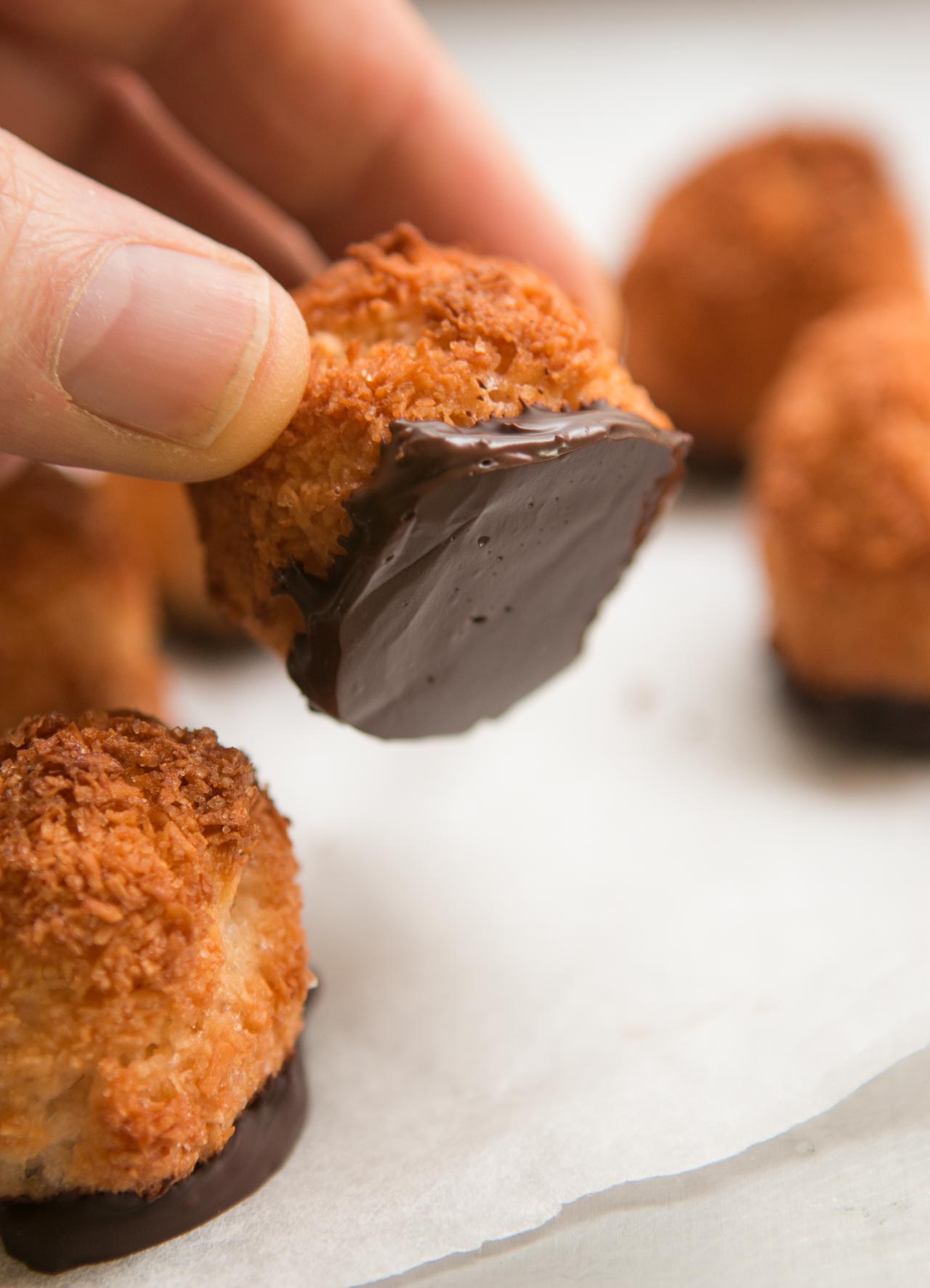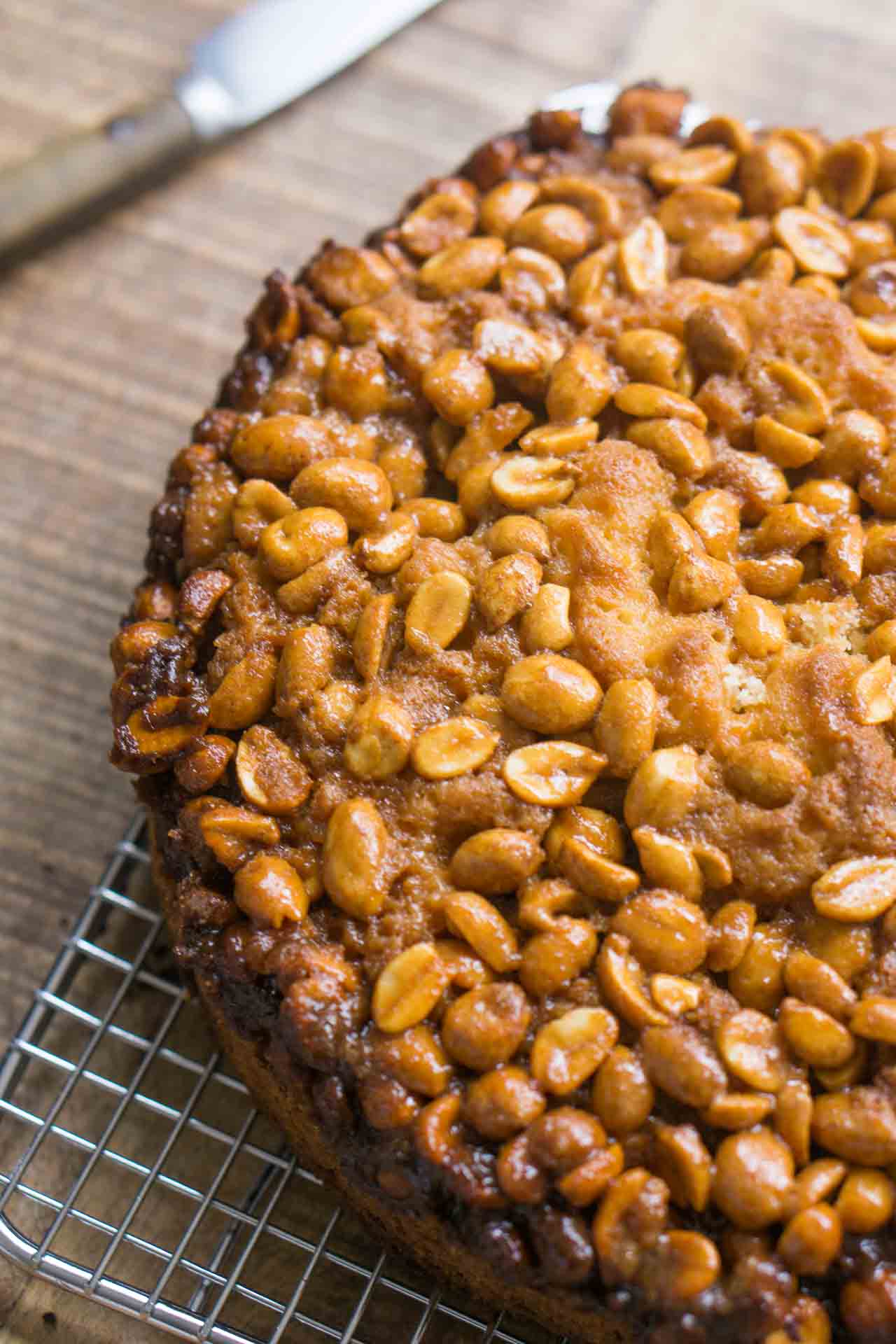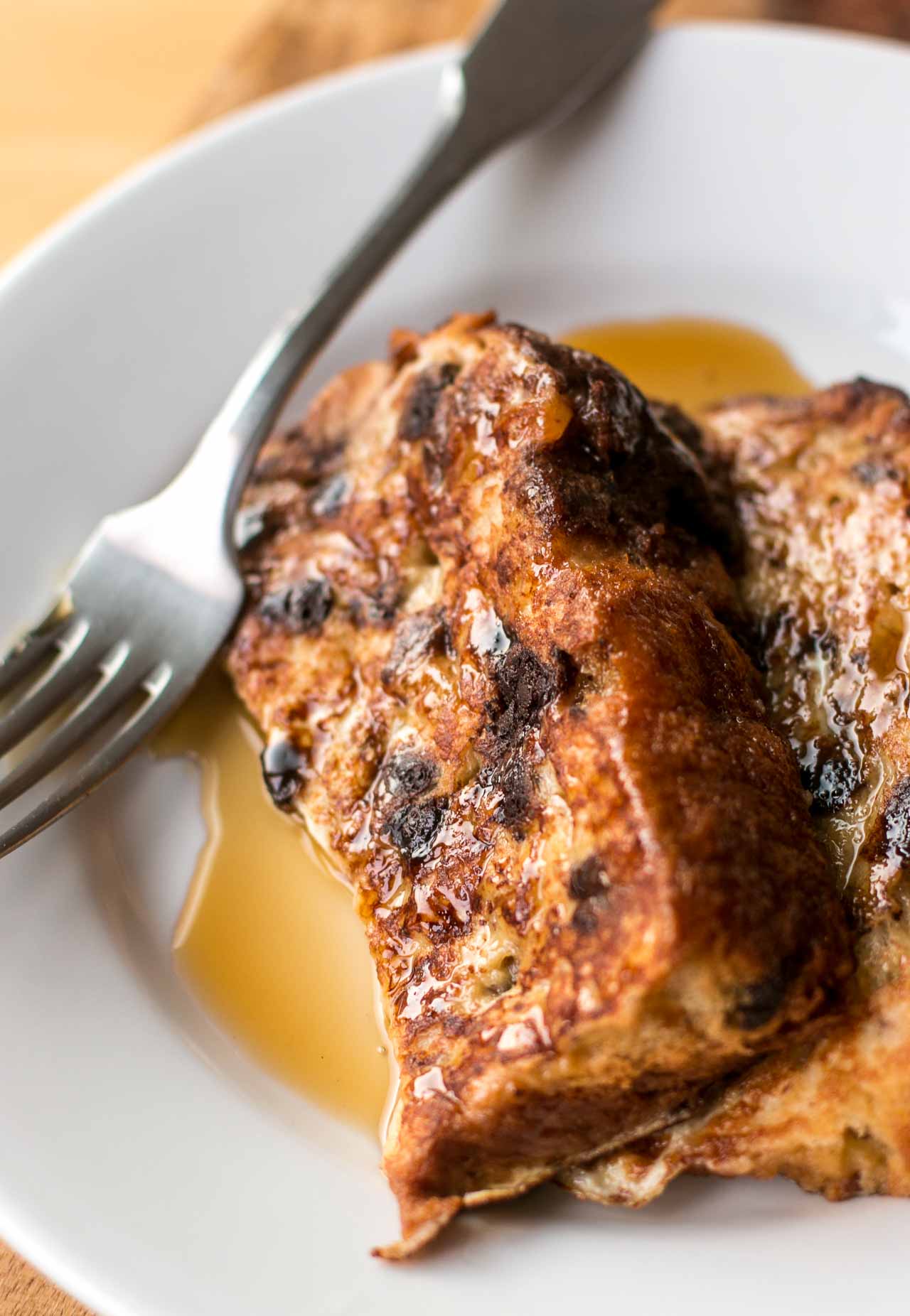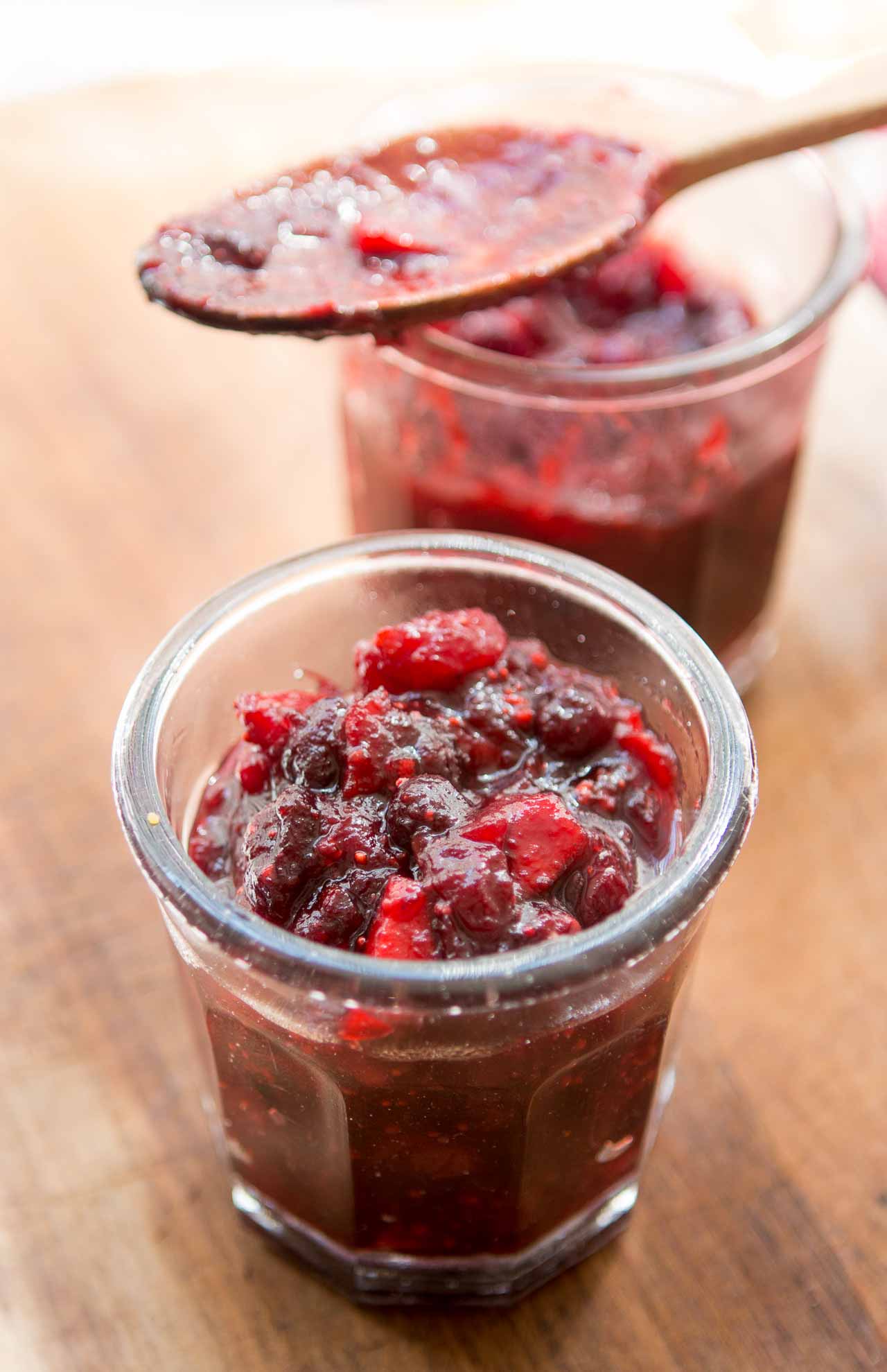Simple Polenta
I’ve been a busy boy the last few weeks, hunkering down finishing a project that’s I’m working on night-and-day. And unfortunately, it’s not even allowed me time to go to the market to do much food shopping. Quelle horreur! So I’ve been raiding my freezer (which is actually a good thing…) and rummaging through my cabinets in search of things that I can sustain myself on.
I had a couple of bags of beautiful stone-ground polenta that I got in Gascony last fall and decided that I’d cook up a big batch to keep on hand. When I lived in California, I ate a lot of polenta because I am a major fan of anything and everything with cornmeal. It’s not as common here and while you can find it in most supermarkets, it’s often the instant variety. And while some people say it’s pretty good, I tried it once and it’s like comparing mashed potatoes made with those powdery dried flakes that come in a box with mashed potatoes made from real, honest-to-goodness potatoes. To me, there’s just no comparison.
I have found coarse polenta by chance in supermarkets and other places, and it’s most prevalent in the Savoie and the Jura regions of France as it’s something people enjoy in the more mountainous areas, I suppose. (I used that leftover instant polenta to make crisp topping.) And I stock up when I find it, like when I was thrilled to find these bags of lovely polenta in the southwest. My only complaint it that I wish I had gotten more.
So I pulled out a pot, boiled up some water, and made a big batch of polenta to feed myself for the next few days. You can leave it nature, or add some aromatic fresh herbs as you please. I had some sage, flat-leaf parsley, and thyme on hand, which are a nice addition along with a pat of salted butter melting on top, which makes a nice, simple lunch. (Although I have been eyeing the take-out pizzas made down the street, that are looking better every day.)
Interestingly, some people like plain polenta for breakfast with butter and maple syrup, so depending on how many people you’re feeding, or how engrossed you are in a project, with this recipe, you’ll have some leftovers in case you wake up the next day craving more.
Polenta
- 3 cups (0.75L) water
- 1/2 teaspoon salt
- 3/4 cup (105g) polenta
- 2/3 cup (60g) grated Parmesan or Asiago cheese
- optional: 2-3 teaspoons minced fresh herbs
- 2 tablespoons butter, salted or unsalted
- Bring the water and salt to a boil in a saucepan.
- Whisk in the polenta. When the water comes back to a boil, reduce the heat to the lowest possible setting and continue to whisk the polenta frequently (more frequently toward the end of cooking), until it’s thick. It will take about 45 minutes. If the heat on your stove does not go low enough to simmer it gently, use a flame-tamer.
- Remove from heat and whisk in the cheese, herbs (if using), and butter.
Notes
Related Recipes and Links
Gluten-free Polenta Mini Pizzas (Perfect Pantry)
Bob’s Red Mill Organic Polenta (Amazon)
Butter-Poached Shrimp and Grits (Ruhlman)
Pumpkin Polenta with Tomatillo-Avocado Salsa (Gluten-free Goddess)
Cornmeal vs. Grits vs. Polenta vs. Masa (Food 52)
Farina Bóna (Swiss Cornmeal) Ice Cream
